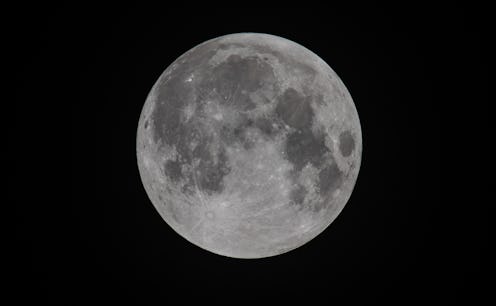Life
What Is A Penumbral Lunar Eclipse?
Slowly but surely, 2016 is winding down to a close. It's been a great year for astronomy enthusiasts and stargazers, with the discovery of a new planet that could support life, the trans-Neptunian object named Niku that's orbiting backwards, and plenty of gorgeous eclipses. In fact, Sept. 16 will bring the final eclipse of the year — a penumbral lunar eclipse. But what is a penumbral lunar eclipse, exactly, and what can we expect to see?
There are three kinds of lunar eclipse: Partial, total, and penumbral. In each case, they're a result of the moon passing directly behind the Earth into its shadow, placing the Earth between the moon and the sun. But a penumbral lunar eclipse is very distinct from the other two kinds. In a total lunar eclipse, the Earth's umbra (the dark part of its shadow) covers the moon completely, while in a partial eclipse, just part of the moon is covered by the Earth's umbra.
The umbra and penumbra refer to different parts of a shadow — and that's a big distinction here. In the case of the penumbral lunar eclipse, the Earth blocks some of the sunlight and stops it from hitting the moon. As a result, the Earth covers part of the moon with its penumbra. Other than this shadow, our moon is as bright as a full moon normally would be. In fact, it can be hard to tell the difference between a regular full moon and a penumbral lunar eclipse.
The Sept. 16 penumbral lunar eclipse will be visible from Europe, parts of Asia, Australia, eastern Africa, western South America, Pacific, Atlantic, Indian Ocean, the Arctic, and Antarctica. You can expect the entire eclipse to last around three hours and 59 minutes — plenty of time to get a good view, if you're in the right spot.
This isn't the only eclipse we've seen in September; on Sept. 1 there was an annular solar eclipse. In this case, the moon was at its furthest distance from the Earth, also called its apogee. Because the moon is so far away during an annular solar eclipse, as it passes in front of the sun, it covers less of it than other eclipses do. So in the sky, those who are lucky enough to live in the part of the world with a full view of the eclipse witnessed a small moon with a ring of sunlight around it (an annulus). Beautiful, indeed!
The last penumbral lunar eclipse was March 23, 2016, so it's been a minute since we've seen one. After this upcoming eclipse, the next lunar eclipse will be Feb. 10, 2017 — and it'll be another penumbral lunar eclipse. Mark your calendars, grab a good seat, and forget what you've seen in textbooks. Witnessing an eclipse in person really can't be put into words.
